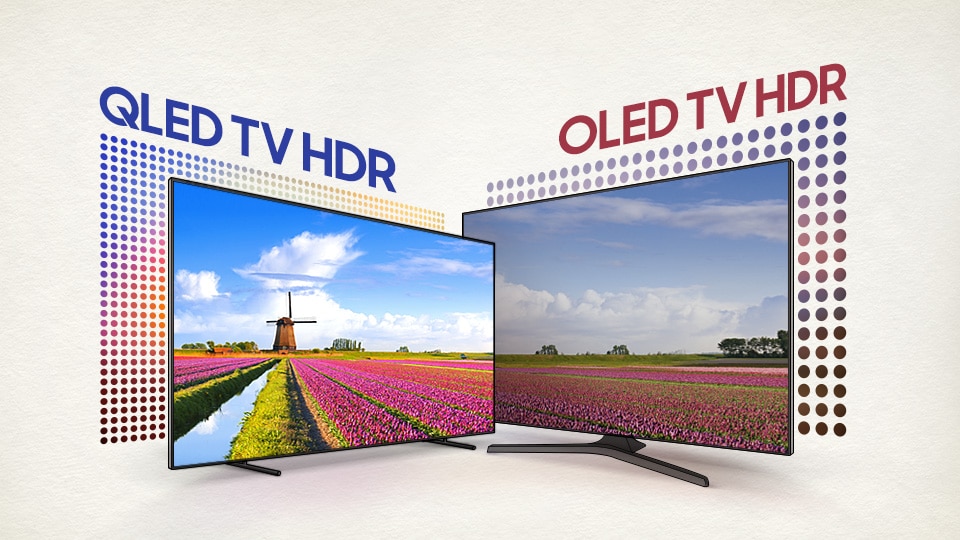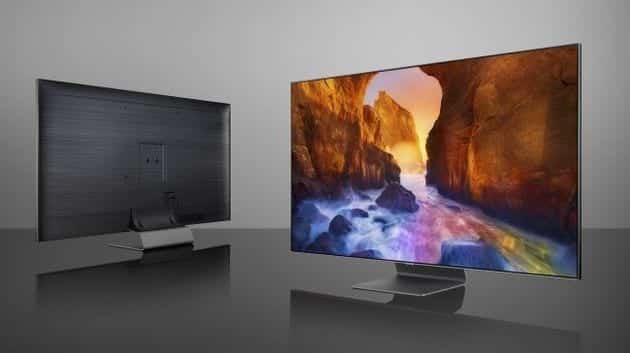QLED and OLED TVs are in a high range. The price is tendentiously higher than the usual range; they are the top of the brands and are always stuffed with extras. From the accessories, TV features and even the addition of new exclusive digital components such as Dolby Vision.
We find the similarity of the acronym, but at the time of buying the TV, the story is different. We are here to help you understand the differences, so you do not buy a TV above or below what you idealize.
What is QLED?
QLED is the abbreviation for Quantum-dot Light Emitting Diode, was launched by Samsung, to replace the SUHD range.
The televisions are LCD technology, just like almost all other models, with the difference being that the screen is backlit in blue, rather than the usual white. The quantum dots are responsible for producing a greater brightness, more vivid and saturated colors, are also responsible for transforming the blue light into colors.
The QLED technology allows a brighter than usual, compared to OLED models, the brightness corresponds to double (QLED – 2000 nits, OLED – 1000 nits).
The OneConnect allows you to keep all your cables organized in one box and is accompanied with a fiber optic cable, super thin so that you can change the arrangement and position of the box. It contains the Tizen system, exclusive Samsung, that if I have a problem you are not using it, also allows the upgrade of the internal processor of the box if you get the latest version.
QLED – Pros
- Superior brightness in bright environments (2000nits);
- More vivid and saturated colors;
- An excellent spectrum of colors.
- OneConnect solution.
QLED – Cons
- Television is larger, more robust and takes up more space;
- Retro lighting can create ghosts (e.g. subtitles);
- Longer response time;
- LCD technology at a high price.
What is OLED?
Organic Light-Emitting Diode, organic LED has the ability to emit their own light. Unlike the QLED, each LED is independent and allows to display black backgrounds with total accuracy; this is because the LED receives the instruction not to produce light and stays off. One of the slogans present in these OLED models is “Whiter Blacks and Whiter Whites.”
Very similar to the P-OLED and AMOLED screens found on some smartphones.
Without the need for retro lighting, we find a thinner screen, with faster response time (0.01ms), more elegant and more comfortable to see in a dark environment. The panel produces 100hz natives being an asset to a gamer user, avoiding drags on the image.
OLED TVs are packed with extras, recommended for HDR10, Dolby Vision and Dolby Atmos content. The OLED is expanding, has been marketed and operated by several brands, which allows exploiting the potential of technology. Sony, for example, has developed the first TV with Acoustic Surface, vibrations emitted by the panel that propagate the sound all over the screen.
OLED – Pros
- Dark backgrounds perfect, bright white;
- Fast response time panel;
- Thinner and sleeker TVs;
- Perfect viewing angles.
OLED – Cons
- High energy consumption in white bottoms;
- Available from 55 “, except for some exceptions;
- Possible Burn-in;
- High-priced technology.
Tip– In order to avoid the rare but possible burn-in of the OLED screen, you should pay attention to the contents of the OLED screen. Do not use the TV on static channels for more than 10h-12h in a row.
QLED vs. OLED- what is the best option?
It is the battle of the century, with regard to the television market. The cup belongs to the OLED for some consecutive years, because the use has been expanded to other brands such as Panasonic and Sony. However, the production of these panels is expensive, time consuming and only available in large sizes.
QLED is on the rise, it can be produced in greater quantity and in sizes smaller than 55. “Each year we have seen a constant evolution of the panel, with the improvement of the image quality, reduction of ghosts and greater balance of colors. the QLED system undergoes a revolution, as regards panel lighting.
If you’re a picky gamer , who enjoys an engaging experience, with a fast response rate, natural color and enjoying a good cinema sound, OLED is the right technology for you! You can also choose QLED, but do not expect a response time as good as OLED. You have vibrant colors, a simplified system and equally spectacular TV experience!
For you who like cinema, OLED offers more software options that help you get a spectacular end result, although in bright spaces you may lose some visibility. As for QLED, all the effects are impressive, from explosions, special effects and everything. The brightness produced by the panel allows greater visibility, especially in dark scenarios, the color palette is very good and allows you to escape any detail.
Personal taste, OLED is my choice for natural colors, quick response panel and its minimalist concept. QLED is a viable option but with some problems that accompany LED TVs since its inception, retro lighting is its biggest defect, it still has ghosts and there is no solution.
Like everything, tastes are not discussed and there is always those who prefer vibrant colors in natural colors, and vice versa. QLED or OLED will always be well served, after all, are the suprossumos of the television market.



